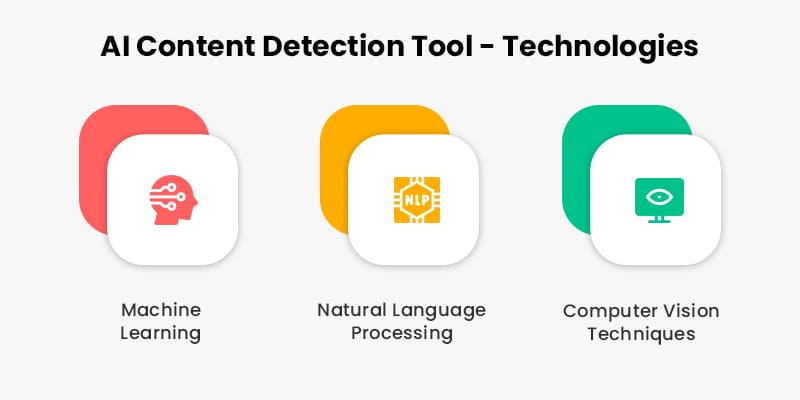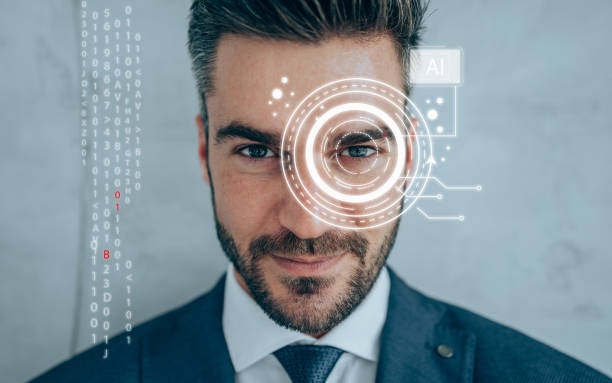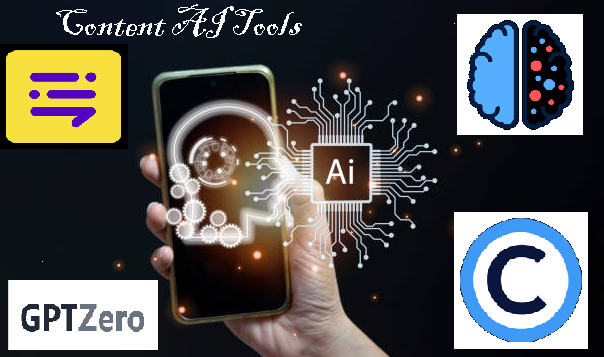etHow to Detect AI-Generated Text – Your Comprehensive Guide
As the digital age progresses, AI-generated text is becoming increasingly prevalent. With its many applications, from chatbots to content generation, it’s crucial to differentiate between human-authored and AI-generated content. This how to detect AI-generated text guide will explore the world of AI detection. It will unveil the AI’s inner workings and provide a fascinating journey through AI text detection tools and features.

The Art and Science of AI Detection: Decoding the Invisible
AI detection refers to the identification of content generated by artificial intelligence, such as text, images, and even audio.
This fascinating technology relies on the unique patterns and characteristics found in AI-generated content, which differs from human-created material.
As AI-generated content becomes increasingly sophisticated, it is paramount to invest in the development and deployment of advanced detection techniques.
AI Detection Combats Disinformation
One cool fact is that AI detection is becoming essential to combat disinformation campaigns and deep fake content that can threaten security, privacy, and democracy.
According to a study by Stanford University, deepfake video detection accuracy has improved from 63.7% in 2018 to 81.4% in 2021.
This highlights the rapid advancements in AI detection technology to counter the growing sophistication of AI-generated content.
AI Detection Plays a Major Role in Content Moderation
Furthermore, AI detection plays a significant role in content moderation, helping platforms maintain the integrity of their content and user experience.
In fact, Facebook’s AI system successfully detected and removed 94.7% of hate speech content before users reported it in the second quarter of 2021, showcasing the increasing effectiveness of AI detection algorithms.
Another interesting statistic is that AI-generated content, especially in the realm of journalism, is on the rise. A report by the Reuters Institute states that 59% of newsroom leaders surveyed in 2020 believed that AI-generated content would become more important over the next five years.
This amplifies the need for robust AI content detection systems that can discern between genuine human-authored content and AI-generated material, ensuring transparency and trustworthiness in the media landscape.
As AI-generated content continues to evolve, it is crucial for AI detection technology to keep pace. The development of state-of-the-art detection methods will empower individuals, organizations, and governments to discern between authentic content and AI-generated fabrications, fostering trust and credibility in the digital space.
Dissecting the AI Text Detective: How It Unravels the Mystery
AI text detectors work by employing advanced machine learning algorithms and natural language processing (NLP) techniques.
They analyze the linguistic patterns, syntax, and vocabulary found in AI-generated content to distinguish it from the human-authored text.
Let’s take a comprehensive step-by-step look at how they function:
Preprocessing
The input text is cleaned and prepared for analysis, removing irrelevant data, noise, and inconsistencies. This stage often involves tokenization, which breaks the text into individual words or tokens, and normalization, which standardizes text representation (e.g., converting all text to lowercase).
Feature Extraction
The algorithm identifies linguistic patterns, syntax, and vocabulary unique to AI-generated content. This can include analyzing n-grams (sequences of n words), examining sentence length, and assessing the distribution of specific words or phrases. Advanced NLP techniques, such as sentiment analysis and named entity recognition, can also be used to identify unusual patterns in AI-generated text.
Model Training
A machine learning model is trained using a dataset containing both human-authored and AI-generated samples. Supervised learning techniques, such as logistic regression, support vector machines, or deep learning models like convolutional neural networks (CNNs) and recurrent neural networks (RNNs), can be employed to learn the distinguishing features between the two types of content.
Model Validation
A different dataset that was not used during training is used to validate the learned model. This step helps assess the model’s performance and ensures that it generalizes well to new, unseen data. Metrics such as precision, recall, and F1-score are commonly used to evaluate the model’s accuracy and effectiveness.
Classification
The model analyzes the input text and assigns a probability score reflecting the likelihood of AI generation. This score is often based on the model’s confidence in detecting the unique features associated with AI-generated content. The higher the score, the more likely the text is AI-generated.
Evaluation
The detector compares the probability score against a predetermined threshold, classifying the text as human or AI-generated. If the score exceeds the threshold, the text is flagged as AI-generated; otherwise, it’s considered human-authored. Users can typically adjust the threshold to fine-tune the detector’s sensitivity based on their specific needs.
Feedback Loop
The AI text detector can continually learn and improve its performance by incorporating user feedback. As more data is collected and incorporated into the training process, the model’s accuracy and generalization capabilities can be enhanced, ensuring optimal detection performance over time.
Key Features of AI Detection Tools
AI detection tool also known as AI detection checker, comes equipped with a variety of features that empower users to discern AI-generated content. Let’s explore some of these features in-depth, along with helpful facts and statistics that showcase their effectiveness and the growing importance of AI detection in today’s digital landscape:
Real-Time Analysis
The AI writing detector can analyze the text as it’s being written or encountered, providing immediate feedback on its origin. This capability is crucial for detecting and mitigating the spread of fake news, disinformation, and deepfake content in real-time. According to a 2019 Pew Research study, 71% of Americans believe that fake news is affecting their trust in government institutions, highlighting the urgent need for real-time AI detection solutions.
Accuracy Metrics
Many tools provide statistics on their detection accuracy, enabling users to gauge their reliability. For instance, a study by researchers at the University of California, Berkeley, found that their AI detection model achieved a 92% accuracy rate in identifying AI-generated text. By sharing their accuracy metrics transparently, AI detection tools can build trust and establish their authority in the field.
Language Support
Some AI detectors offer multilingual support, enabling the analysis of content in various languages. This is especially important as AI-generated content expands globally. A 2020 survey by the European Commission found that 55% of Europeans encounter fake news at least once a week, emphasizing the need for AI detection tools with multilingual capabilities.
Integration Capabilities
Detection tools can often integrate with applications like web browsers, email clients, or content management systems for a seamless user experience. For example, Browser extensions like Surfshark’s CleanWeb can detect and block malicious content, including AI-generated fake news, to protect users while browsing the internet.
Customizable Thresholds
Users can adjust the sensitivity of the detector, fine-tuning its performance to their specific needs. This flexibility allows users to strike a balance between false positives (flagging genuine content as AI-generated) and false negatives (failing to detect AI generated text), depending on their priorities and the context in which they are using the AI detection tool.
API Access
Many AI detection tools provide API access, allowing developers to integrate AI detection capabilities into their own applications, products, or services. By incorporating AI detection into various platforms and tools, developers can help combat the spread of AI-generated content more effectively and efficiently.
Visualization and Reporting
Some AI detection tools offer visualizations and reporting features, helping users better understand the detection process and the specific features that triggered the AI-generated classification. This transparency can enhance users’ trust in the tool and its findings and can be particularly useful for researchers and content moderators.
By exploring these features and recognizing their growing importance, we can appreciate the evolving landscape of AI detection tools and their crucial role in maintaining trust, integrity, and authenticity in the digital world.
How to Effectively Pass AI Detection Tool

Passing an AI detection test can be challenging, particularly as AI detection tools become more sophisticated. However, there are some strategies you can employ to minimize the likelihood of your text being flagged as AI-generated.
Below are some tips to help you create content that appears more human-like and effectively passes AI detection tool:
Write with a natural flow
AI-generated text can sometimes feel disjointed or lack a natural flow. When writing, aim to create content that flows smoothly and logically from one idea to the next.
Vary your sentence structure
AI-generated text may exhibit repetitive sentence structures. To avoid this, use a mix of short and long sentences and varied sentence constructions to create a more authentic and human-like text.
Use idiomatic expressions
AI-generated text might not include common idiomatic expressions, metaphors, or similes that native speakers typically use. Incorporating such language can make your text appear more human-like.
Include personal anecdotes and opinions
AI-generated text might lack personal experiences or opinions. By incorporating your thoughts, beliefs, or experiences, you can create more genuine and unique content.
Use domain-specific knowledge
AI-generated content may lack detailed or nuanced domain-specific knowledge. By incorporating accurate, relevant, and in-depth information, you can make your content more believable and less likely to g flagged as AI-generated.
Ensure text coherence
AI-generated text can sometimes veer off-topic or lack coherence. To avoid this, ensure that your content stays focused on the topic and maintains a logical structure.
Edit and proofread
AI-generated text might contain grammatical errors or inconsistencies. Carefully edit and proofread your content to eliminate such issues and ensure high quality.
Consider the target audience
AI-generated content might not always cater to the intended audience’s needs, preferences, or cultural sensitivities. Keep your target audience in mind when writing, and tailor your content accordingly.
Check for plagiarism
AI-generated text might inadvertently include plagiarized content. Use plagiarism detection tools to ensure that your content is original and unique.
Test with AI detectors
Before submitting your content, you can use AI detection tools to test its likelihood of bflagged as AI-generated. If the tool flags your content, revise it and try again.
Use different online tools
Tools like Quillbot a rephraser tool, Undetectable AI, and others can help you a lot in rewriting the article generated by ChatGPT and other AI’s.
By following these guidelines and refining your content, you can improve the chances of your text passing AI detection tests and create content that appears more human-like and authentic.
Conclusion
In an era of pervasive AI-generated content, AI detection tools are more important than ever. Understanding the intricacies of AI detection and the features offered by detection tools can help users stay vigilant and discerning.
As we continue to balance technological advancements with ethical considerations, it’s essential to remain informed and foster collaboration between AI developers, researchers, and users. Remember, awareness is the key to staying ahead in the dynamic world of AI-generated content.



